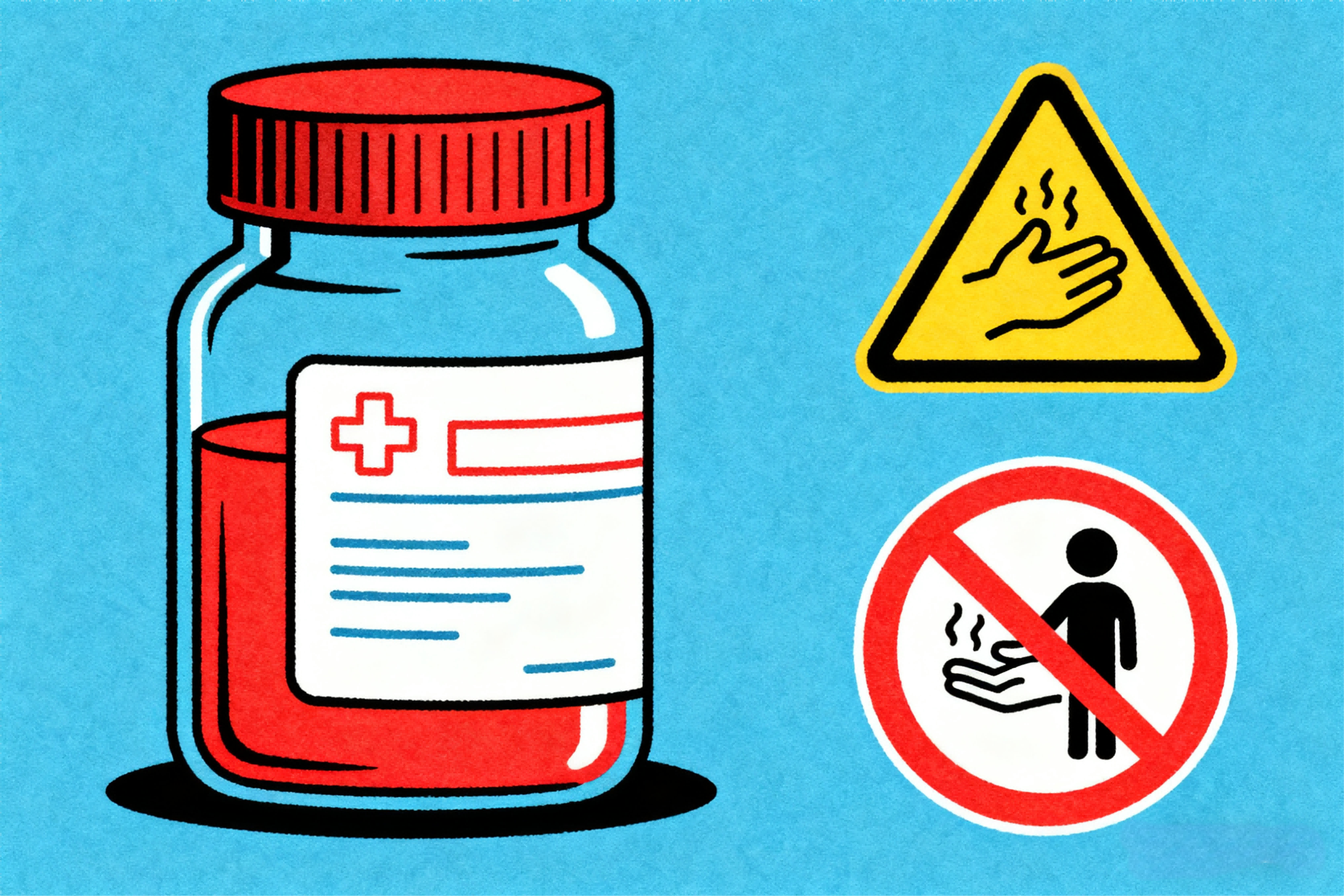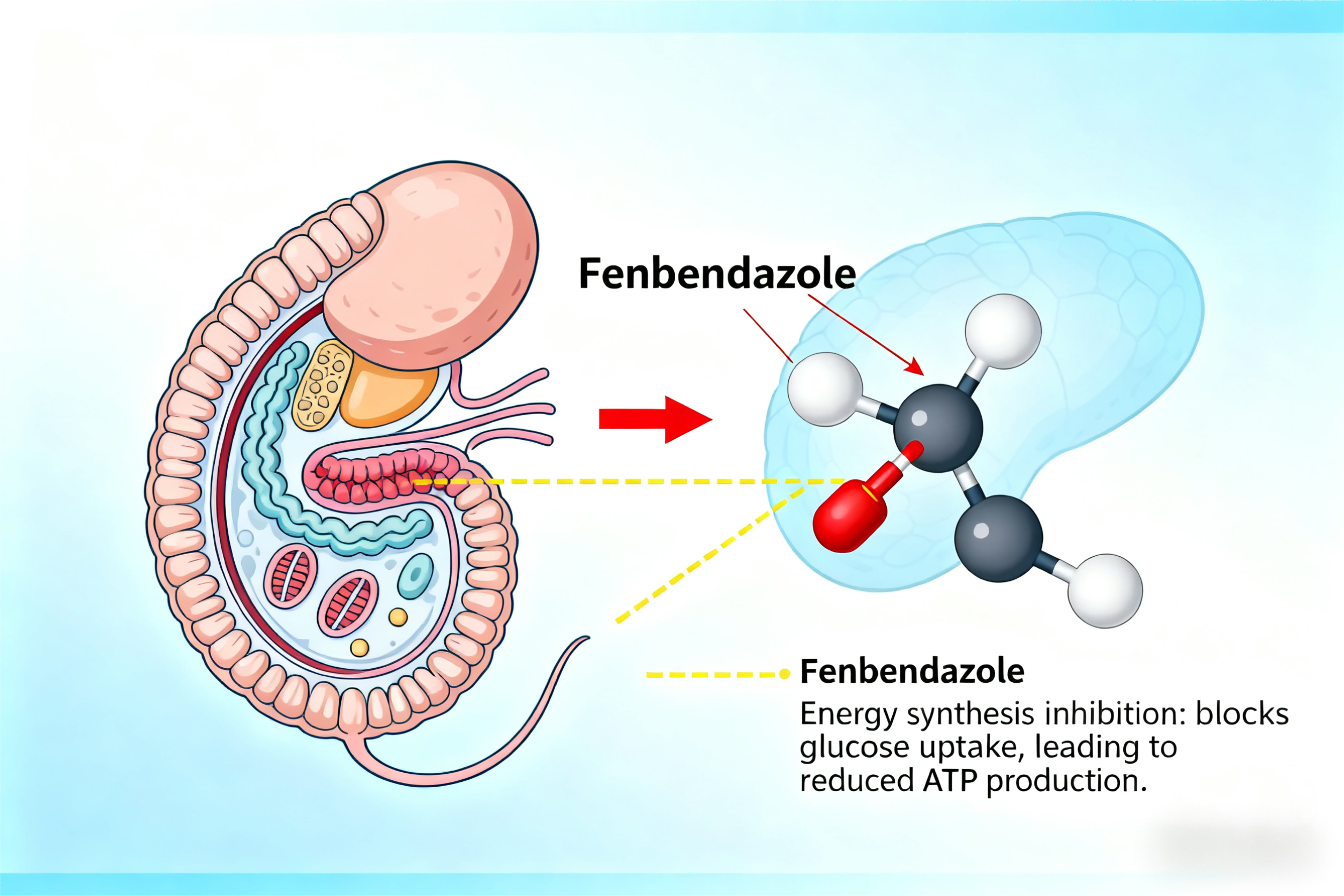Deworming is a critical component of maintaining the health of dogs and cats, and Fenbendazole is a widely used broad-spectrum anthelmintic in veterinary medicine, effective against various parasitic infections. However, scientific usage is essential to balance efficacy and safety. This article details key aspects of Fenbendazole for dogs and cats—including its mechanism of action, administration guidelines, side effects, and storage requirements—to help pet owners use the medication correctly.
I. How Fenbendazole Works: Killing Parasites
The core mechanism of Fenbendazole is to block parasites’ ability to produce energy. It interferes with metabolic processes in worms, preventing them from synthesizing the energy substances needed to sustain life. Eventually, the parasites die from "starvation."
Additionally, Fenbendazole can inhibit or kill immature life stages of some parasites (e.g., larvae, eggs), reducing the risk of reinfection at the source.

II. Directions for Use (For Both Dogs and Cats)
Before use, strictly follow the drug label instructions or your veterinarian’s guidance. Do not adjust the dosage or administration method independently. Below are general principles:
1. Administration Method
Fenbendazole is best absorbed when given with food. It is recommended to administer the medication along with your pet’s regular meal to improve absorption.
2. Deworming Frequency (By Pet Age/Stage)
- Puppies/Nursing Mothers: Puppies typically undergo deworming at 6, 8, 10, and 12 weeks of age after weaning. Nursing mother dogs should also be dewormed to prevent parasite transmission to puppies via milk.
- Adult Dogs: Without specific infections, adult dogs generally require deworming twice a year. If parasites are detected, the frequency may be increased as advised by your veterinarian.
- Cats: Fenbendazole products are not yet FDA-approved for use in cats. However, veterinarians may prescribe "off-label" Fenbendazole to treat certain parasites (e.g., Giardia, lungworms). The frequency must strictly follow veterinary instructions.
III. What to Do If a Dose Is Missed
If you accidentally forget to administer a dose, the first step is to consult your veterinarian—do not give a dose on your own. Veterinarians typically recommend:
- If it is far from the next scheduled dose: Administer the missed dose immediately, then continue with the original schedule.
- If it is nearly time for the next dose: Skip the missed dose and resume with the next scheduled dose.
- Never administer an extra dose or double dose, as this increases the risk of side effects.
IV. Potential Side Effects (For Both Dogs and Cats)

When used as directed (per label or veterinarian advice), Fenbendazole is well-tolerated, and side effects are rare. If discomfort occurs, handle it according to the following categories:
1. Common Mild Side Effects (No Emergency Treatment Needed—Contact Your Vet for Feedback)
- Vomiting
- Excessive salivation
- Diarrhea (usually a temporary reaction)
2. Severe Side Effects (Seek Immediate Veterinary Care)
If your pet shows signs of allergic reaction (anaphylaxis), contact your veterinarian or visit an animal hospital immediately. Typical symptoms include:
- Hives (skin welts)
- Facial swelling (prominent around the eyes, nose, and mouth)
- Lethargy or drowsiness
- Difficulty breathing or wheezing
- Weakness or collapse
V. Precautions for Human Exposure

Fenbendazole is a prescription veterinary medication and is strictly not intended for human use. Pet owners should take the following precautions:
- Wash your hands immediately after handling the medication to avoid skin absorption of residues.
- Do not administer pet medications to humans, nor give human medications to pets—differences in composition and concentration between the two can easily cause poisoning.
- If you accidentally ingest Fenbendazole intended for pets, contact a doctor immediately or call the U.S. National Poison Control Center hotline: 800-222-1222.
VI. Monitoring During Treatment
No specific monitoring is required for Fenbendazole use. However, based on your pet’s individual condition (e.g., age, underlying diseases, concurrent medications) or the type of infection, your veterinarian may recommend routine tests (e.g., fecal tests, blood tests) to evaluate treatment efficacy and your pet’s health status.
VII. When to Contact Your Veterinarian Immediately
Reach out to your veterinarian right away if you encounter any of the following situations:
- Severe side effects are observed (e.g., the allergic reactions or persistent vomiting/diarrhea mentioned above);
- Your pet’s parasitic infection symptoms (e.g., diarrhea, weight loss) do not improve or worsen;
- You suspect a drug overdose (e.g., accidental administration of multiple doses);
- You have additional questions or concerns about Fenbendazole use.
VIII. Risk of Fenbendazole Overdose and Response
Fenbendazole has a high safety profile in dogs and cats. A single small overdose usually does not cause toxicity. However, long-term, high-dose overdoses may lead to "bone marrow hypoplasia"—inhibition of bone marrow hematopoietic function, resulting in abnormally low blood cell counts.
If you suspect an overdose, take immediate action:
- Contact your primary veterinarian
- Call an animal poison control hotline (consultation fees may apply):
- Pet Poison Helpline: 855-764-7661
- ASPCA Animal Poison Control Center: 888-426-4435
IX. Storage Instructions for Fenbendazole
Proper storage ensures drug efficacy. Strictly follow these requirements:
- Prioritize the storage instructions on the prescription label or the label provided by the compounding pharmacy (for compounded medications);
- Storage temperature: Room temperature (not exceeding 77°F/25°C); do not freeze;
- Sealed storage: Tighten the drug bottle/container to prevent moisture or light exposure;
- Safety precautions: Keep the medication out of reach of children and pets to prevent accidental ingestion.




